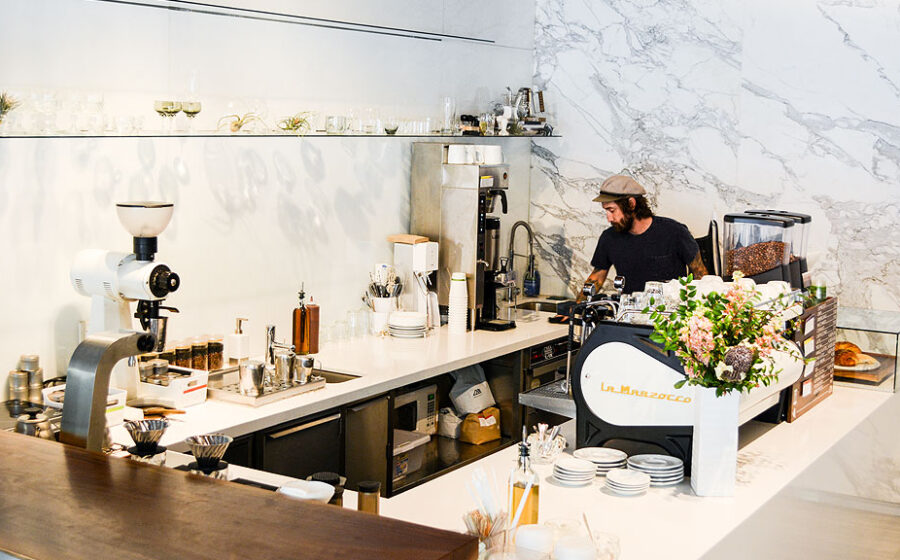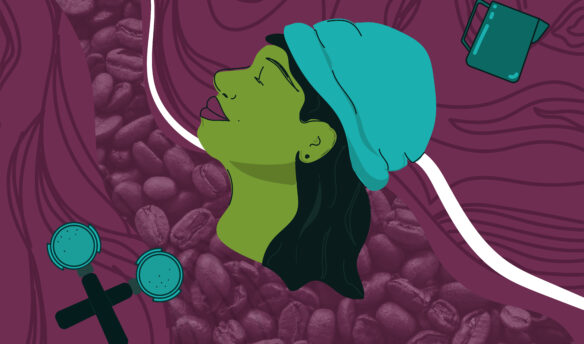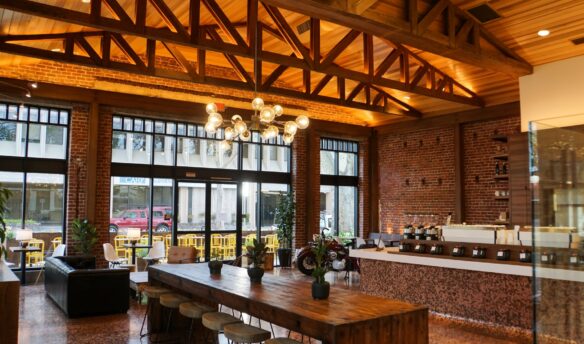[D]enver’s Union Station ushers large crowds into the city’s Lower Downtown (LoDo) area, scattering commuters, tourists, and suburbanites to nearby offices, restaurants, and attractions. Though Denver boasts an impressive list of specialty coffee shops, the vibrant district was devoid of any third-wave offerings until 2013, when Seanna Forey opened Little Owl on Blake Street.
Forey lived in LoDo at the time, and was an active member of the city’s coffee community. Painfully aware of the coffee desert she was living in, Forey eventually pitched the idea of turning a conference room in the neighborhood’s SugarCube Building into a coffee shop. “One thing led to another and it worked out,” she says.
But the shop was much smaller than Forey had anticipated. Making it work required creativity, a few compromises, and a lot of research within the city’s coffee community. “I talked to as many baristas as I could, talking through the challenges that they faced even on a normal-sized bar,” she says.
Forey enlisted Joshua McNeilly of Denver’s Black Black Coffee to help her synthesize all the information she’d gathered into designing a bar that was ergonomically friendly, cultivated happiness for employees, and was a positive environment.
“That was our number one thing: we wanted positivity and a healthy environment,” Forey says. “We really, really tried hard to make it a beautiful space, but one that was approachable and warm.”
Approachability was important for welcoming in many out-of-towners new to specialty coffee, and for supporting other Denver coffee businesses. Foley says she drew from negative experiences feeling alienated in specialty shops and worked diligently to create a warm atmosphere at Little Owl.
The café is the customer-facing counterpart to Middle State Coffee, a roastery started by Jay DeRose and Dustin Pace. DeRose was an integral part of the planning phase and early operating days at Little Owl. He left the café to work in other areas of coffee, then launched Middle State Coffee with Pace in 2014. As both businesses continued to find success, Forey and DeRose decided to form a partnership between the two companies.
“We’ve always been really good friends, and we both realized we were better together,” Forey says. “We joined forces; two very different brands that complement each other well.”
1) Altitude Adjustment: Because of the high altitude in Denver, water boils at a much lower temperature, resulting in challenges with under-counter water systems. The Marco Über font pre-heats water to 196º Fahrenheit, then the water is transferred to a kettle on a single burner and held at boiling for the remainder of the pour-over process.
2) Preparation Nation: On the manual brew bar, single-origin selections are pre-dosed for either V60 or Aeropress. Glass jars hold single-origin beans pre-dosed for the Fetco CBS-2041e batch brewer.
3) Quick Rinse: A small space required some compromises, including a pitcher rinser on the back bar instead of next to the espresso machine. With too little space for hinge doors, sliding-door refrigeration was also a must, despite its hefty price tag.
4) Vintage Variety: Each piece of glassware stored on the back shelf was selected to accommodate a specific milk-to-coffee ratio. “That’s a big portion of everything we do here,” owner Seanna Forey says, “functionality and aesthetic and trying to blend the two.”
5) Custom Design: Pastries are stored under the point-of-sale, in a wood and glass encasement designed by local artist Justin Pollom.
6) Stone Kold: Side-by-side Mazzer Robur Kold grinders hold a rotating single-origin and Espresso Neat, the staple espresso blend from Middle State Coffee.
7) Form + Function: The barista working the till also mans the two-group La Marzocco Strada MP, which Foley says they chose for aesthetics, functionality, and reliable service support.
8) Pristine Pour-over: Customers camped out at the counter have a full view of the manual brew bar, which includes a sleek Marco Über font and under-counter boiler, white Acaia scales, Hario kettles, V60s, and Aeropresses.

1) Condiment Corner: Customers pick up drinks next to the Strada MP, where the condiments are also stationed.
2) Earn Your Keep: The Mahlkönig EK 43 earns its prominent place, taking care of grinding for batch brewing, the manual brew bar, and some one-off espresso selections.
—Ellie Bradley is Fresh Cup‘s editor.
















